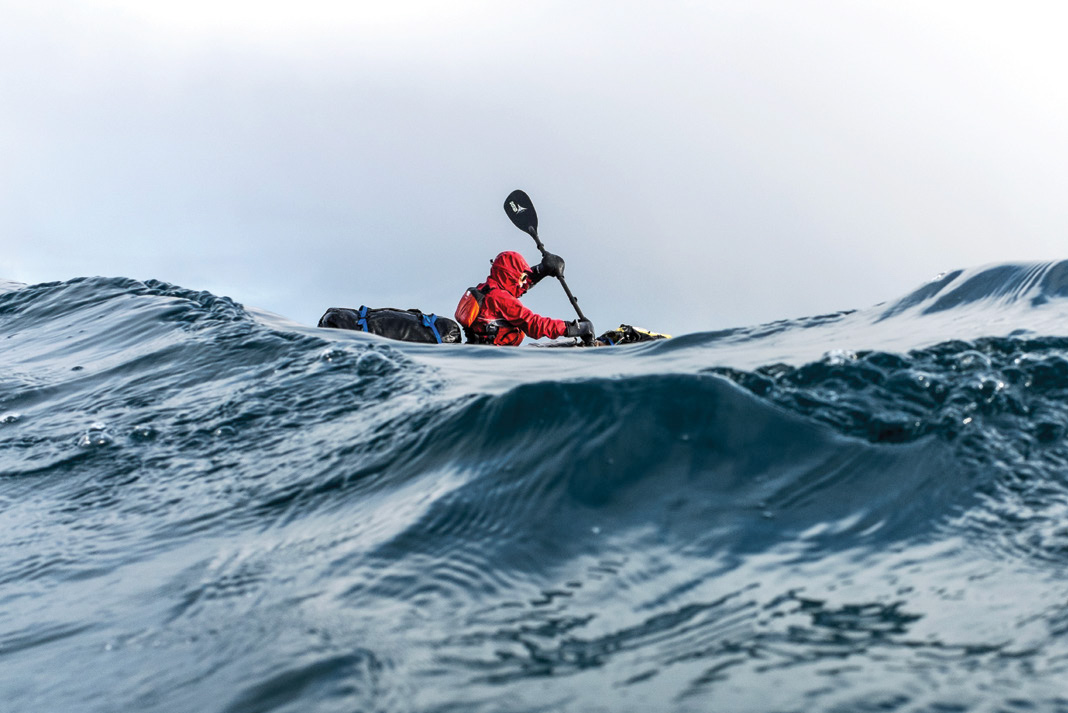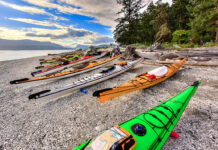Rene beams at his new kayak like a proud parent. We take turns hopping between his ride—this year’s hot new ocean play kayak—and my 18-year-old Nigel Dennis Kayak Explorer, which is older than one of the paddlers on our trip. Rene asks the predictable question: “So, when are you going to replace that thing?” No time soon, I tell him.
While whitewater kayaks undergo almost annual redesigns, careening into outlandish shapes—anyone remember the Perception Mr. Clean?—sea kayak hulls by comparison have evolved at a snail’s pace. A new Explorer’s hull is the same as my old one. Rene’s hot new ride isn’t that different from my Valley Avocet. The Avocet was released in 2000.
It’s tempting to chalk up the slow pace of change to the sport’s love of heritage, but I beg to differ. Design consistency is about the perfection of what sea kayaks do: navigate mixed conditions in a single voyage. They must do a decent job at everything: speeding over flats, managing wind, gear-hauling, rough-water stability and playfulness. This restricts how far design can go in any one direction. After all, just an 11-percent difference in waterline turns an 18-foot expedition boat into a 16-foot day-tourer. Designers have only tiny margins to play with: a little more rocker here, a tad less volume there.
This demand for versatility imposes what evolutionary biologist Stephen Jay Gould called the “right wall of evolution.” In stable parameters, the first set of big innovations provides major advantages. For sea kayaking, I’d say that was back in the ‘80s and ‘90s. After that, innovation comes in tiny increments with high costs in other functionality. Build up any one factor and you’ll have boats like the Valley Rapier or P&H Hammer: great at one thing—racing and surfing, respectively—but not so great in other waters. In competition, where a tiny advantage shaves off a fraction of a second, these advantages matter. However, for mixed conditions, design can only push the right wall so far.

It’s actually a huge benefit to paddlers that kayak hulls remain so similar. We can’t help but become better.
Elena Moon, a professional user-experience designer, and expert fly fisher Amy Hazel nailed this in a recent TED Radio Hour talk. Fishing rods, like sea kayaks, have been unchanged for years—which Hazel loves. “When your tools don’t change, you have time to learn the soft stuff,” she says. “In fly-fishing it’s the study of insects, and the habitat of the fish. You don’t worry, ‘I can’t cast on this rod because it’s so different from the rod last year.’”
Moon chimed in: “You learn your craft at a higher level when you’re not spending a good portion of your energy re-learning your tools.” The same is true of kayaks. The infinite varieties of water, current, swell and wind are plenty to keep us occupied. We don’t need a new boat to figure out, too. Like sharks that evolved millions of years before dinosaurs, sea kayak designers figured out the steep part of the innovation curve long ago. Play around with a quarter inch of stern rocker if you want. I’m going paddling.
A regular contributor to Adventure Kayak, Neil Schulman writes, photographs and does conservation work in Portland, Oregon.








